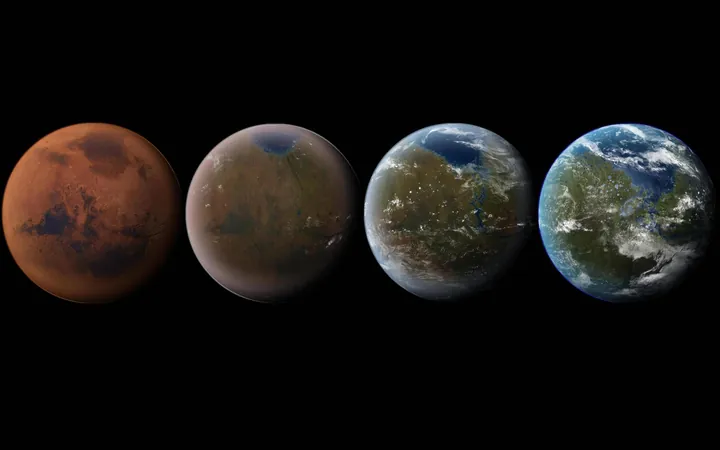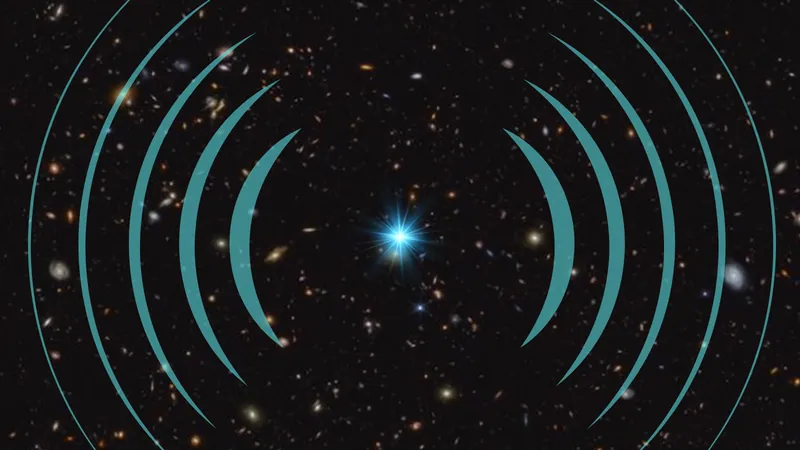
The Quest for Habitable Planets: Are Advanced Civilizations Creating New Worlds or Megastructures?
2024-11-01
Author: Li
Are we alone in the universe, or do advanced alien civilizations roam the cosmos, flirting with engineering feats beyond our wildest imaginations? Imagine civilizations capable of dismantling entire planets or constructing colossal shells—Dyson spheres—around stars to harness their energy. Such constructs are theoretically detectable by our modern telescopes, but, to date, any objects that have intrigued astronomers have turned out to be natural formations instead of these rumored alien megastructures.
The concept of a Dyson sphere, introduced by physicist Freeman Dyson in the 1960s, resonated during an era when our understanding of exoplanets was rather limited. Back then, it was believed that planetary systems were a rarity, yet rapid advancements in astronomy have shown us that nearly every star is accompanied by a multitude of planets, many of which could conceivably be transformed into habitable environments. The potential for life-bearing planets lurking within our own solar system—especially among its water-rich moons—raises the intriguing possibility that advanced civilizations might choose terraforming over constructing gigantic energy-absorbing spheres.
Instead of relentless energy consumption that spawns dystopian chaos, what if an advanced civilization opted for a more sustainable approach? The idea of repositioning Earth-like planets to a star's habitable zone seems not only more feasible but also far less destructive than whipping planets apart for their resources. The question remains: if such a civilization exists, how would astronomers identify evidence of their existence or their actions in the universe?
One compelling method might involve scrutinizing planetary systems that exhibit signs of unnatural formation. For example, a solar system containing multiple planets conveniently situated within the habitable zone, with few to no outer planets, would be statistically anomalous, suggesting potential engineering behind its structure. Astronomers might also investigate irregular orbital patterns, such as planets exhibiting unstable orbits or unusual chemical compositions inconsistent with their surrounding celestial bodies. Any deviations from the expected norm could hint at advanced manipulation.
Moreover, there’s the exciting prospect of identifying "construction zones" in space. The use of high-powered directional lasers to maneuver celestial bodies might leave detectable traces of stray light across interstellar distances. If astronomers were to observe a monochromatic laser beam emanating from a star potentially rich in life, it could imply extraterrestrial civilizations engaged in a cosmic remodeling of their environment.
While the likelihood of uncovering such evidence remains slim, the exploration of these possibilities ignites the imagination and deepens our appreciation for the unknown. The thought that we could someday discover systems bustling with engineered planets or industrious alien builders crafts a tantalizing narrative. Who knows how many habitable worlds might be nestled within a single star system? The universe could be teeming with hidden wonders, waiting to be unveiled through the lens of our advancing technology.
Stay tuned, as the quest to locate habitable worlds and discern the actions of potential extraterrestrial architects continues!




 Brasil (PT)
Brasil (PT)
 Canada (EN)
Canada (EN)
 Chile (ES)
Chile (ES)
 Česko (CS)
Česko (CS)
 대한민국 (KO)
대한민국 (KO)
 España (ES)
España (ES)
 France (FR)
France (FR)
 Hong Kong (EN)
Hong Kong (EN)
 Italia (IT)
Italia (IT)
 日本 (JA)
日本 (JA)
 Magyarország (HU)
Magyarország (HU)
 Norge (NO)
Norge (NO)
 Polska (PL)
Polska (PL)
 Schweiz (DE)
Schweiz (DE)
 Singapore (EN)
Singapore (EN)
 Sverige (SV)
Sverige (SV)
 Suomi (FI)
Suomi (FI)
 Türkiye (TR)
Türkiye (TR)
 الإمارات العربية المتحدة (AR)
الإمارات العربية المتحدة (AR)